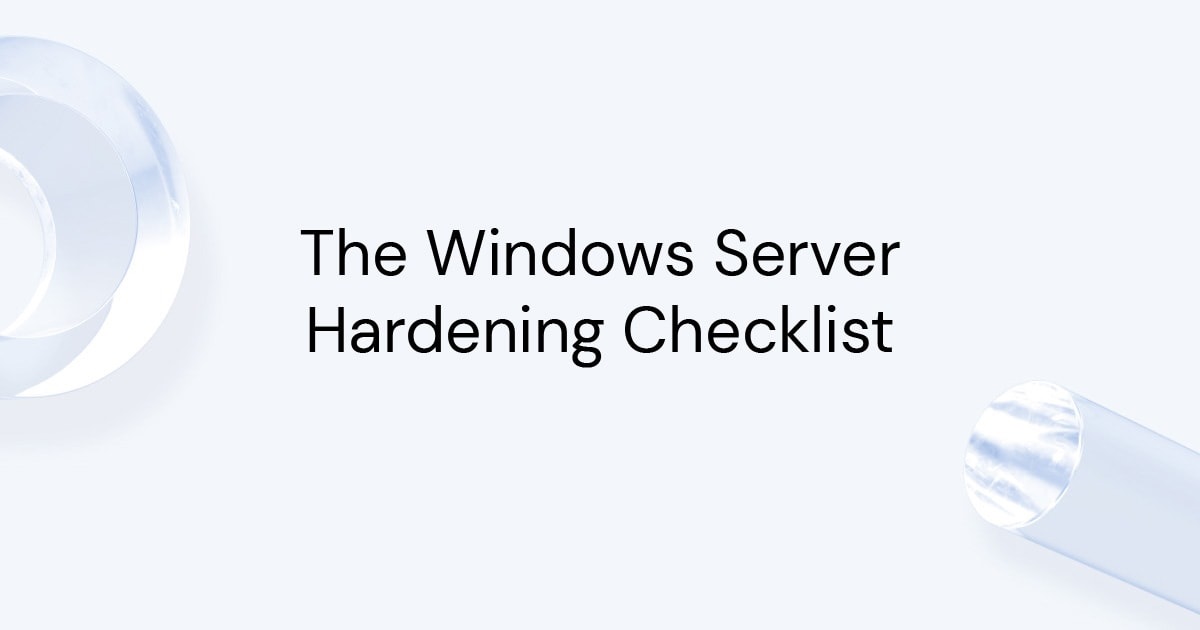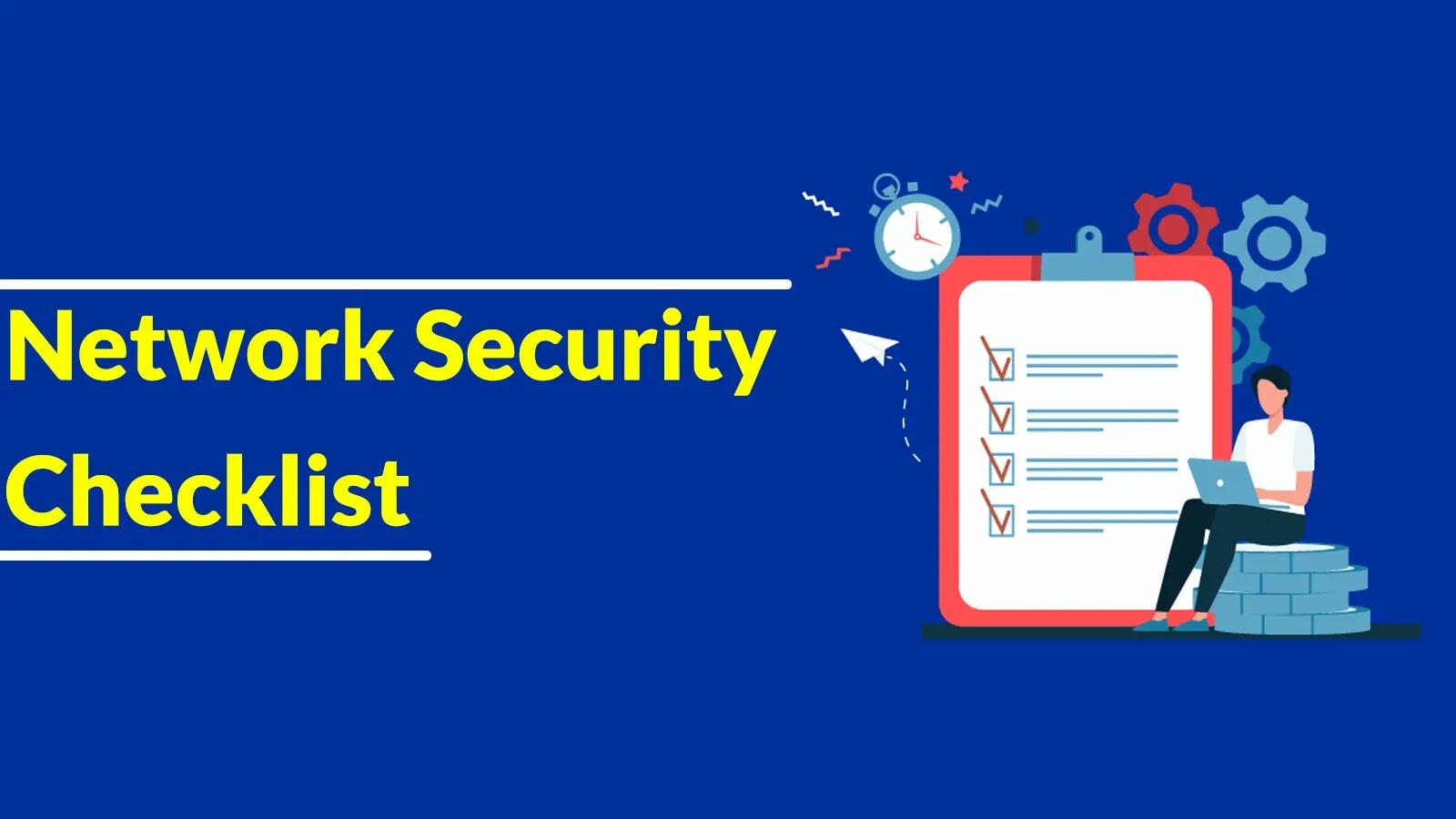How to Create a Security Checklist for Networks and Windows Server
A Security checklist is a structured List of steps and measures designed to assess and enhance the Security of a System or Network.
It encompasses all aspects of Security, including technical configurations, policies, preventive measures, risk management, and Security solutions. Initially, I intended to focus on creating a Security checklist for Windows Server and highlight its key considerations.
However, after drafting the content, I decided to broaden the scope to benefit a wider audience by first addressing essential elements for a Network Security checklist before delving into the Windows Server checklist.
Consequently, I revised the content to cover both topics, providing concise yet valuable insights on Network and Windows Server Security for Iranian Network and Security professionals.
What Should We Consider When Preparing a Network Security Checklist?
For Network and Security administrators, checklists are vital tools that ensure tasks are executed effectively. Managing infrastructure and securing networks involves a wide range of considerations that require thorough evaluation. Here are some key areas to focus on:
Network Device Configuration
Several aspects of Network device configuration must be evaluated from a Security perspective:
- Review and configure Security settings for routers, switches, and firewalls to ensure optimal Security.
- Update the software and firmware of Network devices to the latest versions.
- Disable unnecessary services and protocols to minimize vulnerabilities.
Access Management
A common weakness in many Iranian organizations is the improper assignment of access levels to users. Key considerations include:
- Implement strong authentication mechanisms for accessing Network devices and services.
- Configure access levels and permissions based on the Principle of Least Privilege.
- Use encryption for remote access and data transmission to ensure confidentiality.
Infrastructure Activity Monitoring
Monitoring all activities within the infrastructure falls under the responsibilities of Network and Security experts. Critical points include:
- Monitor Network activity using surveillance software, intrusion detection, and prevention tools.
- Review System logs and events to identify suspicious activities.
- Deploy alerting systems to detect and respond to Security threats and attacks.
Antivirus and Security Tool Management
Some novice Security professionals mistakenly believe that installing antivirus software is sufficient, but there’s much more to do. Essential steps include:
- Properly configure anti-malware software and firewalls for optimal protection.
- Regularly Update and scan servers and systems to detect and remove malware.
Threat Management
While Security experts strive to identify cyber threats, it’s impossible to catch them all, as hackers continually discover and exploit new vulnerabilities. Key measures include:
- Conduct penetration testing to identify Network weaknesses and vulnerabilities.
- Develop a comprehensive Security plan to address various threats effectively.
- Create a Network map to identify areas that are prone to attacks.
- Restrict physical access to servers by placing them in a secure environment, granting access only to authorized personnel, and setting a password for BIOS or UEFI access.
Backup Management
Organizations can avoid surprises and be prepared for Security threats by establishing a regular backup plan. Important considerations include:
- Perform regular backups of data and Network configurations to ensure data integrity and continuity.
- Test and validate backup methods to ensure data can be restored during emergencies.
Training and Awareness
Employees in an organization aren’t expected to understand all business-related cyber risks—that’s the role of Security experts, who must educate them on critical points. Key aspects of awareness training include:
- Provide regular training to users on Security issues, data protection practices, and safe Network usage behaviors.
- Keep staff updated on the latest hacking techniques and countermeasures.
The points above are just a few of the critical elements that should be included in Network and Security checklists. Keep in mind that each organization and Network environment has unique Security needs and requirements. Regularly updating the checklist ensures that essential Security aspects are consistently addressed.
What Should We Focus on When Preparing a Security Checklist?
A Security checklist helps ensure that critical Security measures are taken into account. By using a checklist, you can protect your System from threats and prevent hackers from easily breaching your infrastructure. Generally, a Security checklist should include the following:
- Review and Update the operating System and software to the latest versions.
- Set up and configure a firewall to control Network traffic.
- Use encryption to safeguard data.
- Manage passwords effectively and enforce the use of strong passwords.
- Limit both physical and logical access to the System.
- Monitor and investigate suspicious events and activities to ensure compliance with regulations and prevent potential Security risks.
- Deploy antivirus and anti-spyware software.
- Review Security settings for System services and roles to ensure optimal Security.
- Perform regular data backups.
- Educate users on Security practices and safe behaviors.
Protecting Privileged Identities
Protecting privileged identities is a critical Security concern for organizations. Privileged identities refer to specific user accounts that have elevated access to sensitive resources and necessary data, such as System administrators, Network administrators, database managers, and senior executives.
These accounts not only access but can also modify sensitive Information. When preparing a Security checklist, consider the following for privileged identities:
- Principle of Least Privilege: This principle dictates that privileged identities should have the minimum permissions necessary to perform their tasks, ensuring that access is granted only for specific duties and unnecessary privileges are removed.
- Identity and Access Management: To safeguard privileged identities, all user accounts in the organization must be managed appropriately. This includes creating, deleting, or suspending accounts for former employees, granting access based on the Principle of Least Privilege, implementing strong password management and lifecycle policies, and using two-factor authentication.
- Monitoring Activities and Threat Detection: Continuous monitoring of privileged account activities enables the quick identification and response to threats and Security breaches. Tools like Security Information and Event Management (SIEM) systems and behavioral analytics can be highly effective.
- Access Restriction: Complementing identity and access management, this involves precisely defining access based on organizational policies. Applying the Principle of Least Privilege and Role-Based Access Control (RBAC) can limit privileged access to identities, thereby enhancing Network Security.
- Encryption and Key Management: Strong encryption for sensitive data and proper management of privileged accounts play a vital role in preventing cyberattacks. Security experts must ensure secure mechanisms, such as storing keys in protected environments, using robust and up-to-date encryption methods, and managing the lifecycle of keys and certificates effectively.
- Segregation and Isolation: To prevent the spread of attacks targeting privileged identities, segregate accounts from the leading Network. For example, placing user accounts in a separate Network from the organization’s primary Network makes it harder for hackers to identify them.
Why Is a Windows Server Security Checklist Important?
A Windows Server Security checklist is a valuable tool for Network and Security professionals to assess and enhance System Security. It helps identify critical components within the Windows Server operating System and implement necessary protective measures. Here are some reasons why this checklist is essential:
- Identifying Security Weaknesses: The checklist helps pinpoint vulnerabilities in the operating System, such as misconfigurations, software flaws, improper access assignments, and other factors that could compromise server Security.
- Protection Against Threats: Utilizing a Windows Server Security checklist helps shield the System from various threats, including intrusions, malware attacks, insider threats, and other Security risks, thereby significantly reducing the likelihood of successful attacks.
- Compliance with Standards and Regulations: Certain industries and organizations are required to adhere to specific Security standards and regulations. The checklist ensures compliance by identifying and addressing relevant requirements in line with organizational policies.
- Improving Server Performance: Windows Server Security has a direct impact on business continuity. By implementing checklist measures, you can enhance server performance and prevent disruptions caused by hardware failures or data loss due to cyberattacks.
- Ensuring Privacy and Data Protection: Windows Server often hosts sensitive data. The checklist helps identify Security measures related to data protection and privacy, enabling actions to safeguard data and prevent unauthorized access.
In summary, a Windows Server Security checklist ensures server Security, identifies and mitigates vulnerabilities, and prevents malware attacks from severely disrupting business operations.
How to Prepare a Windows Server Security Checklist?
A Windows Server Security checklist is designed to bolster the Security of the Windows Server operating System. Given its complexity, Windows Server requires a comprehensive checklist with attention to various details. Here are some key considerations:
- Operating System Updates: Ensure the latest Security updates are installed on the Windows Server operating System.
- Firewall Configuration: Enable the Windows firewall and review its settings. Carefully configure access rules to control both inbound and outbound traffic, and restrict access to unnecessary services.
- Antivirus Software: Install a robust, up-to-date antivirus solution on the server, ensuring it continuously scans incoming and outgoing files for malware and other threats.
- Drive Encryption: Protect sensitive data by encrypting the System drive and other critical drives using technologies like BitLocker or similar tools.
- Service and Role Configuration: Review the settings of System services and roles, assign necessary access to users and groups, and turn off unneeded services.
- Password Management: Enforce the use of strong, complex passwords for user accounts. Implement strict password policies, including expiration and periodic changes.
- Event Logging and Review: Enable event logging on Windows Server to track activities and detect suspicious events, allowing for timely responses when needed.
- Regular Backups: Ensure regular backups of critical server data, including files, databases, and System configurations, to facilitate recovery in the event of errors or attacks.
- User Training: Educate users and personnel who interact directly with the Windows Server on proper usage, ensuring they avoid accessing untrusted or suspicious websites on the server.
Infrastructure Management and Monitoring with Operations Management Suite (OMS)
Once your Security checklist for the Network or Windows Server is complete, the next step is to select software to execute the tasks outlined in the checklist.
Several tools are available for infrastructure management and monitoring, one of which is the Microsoft Operations Management Suite (OMS), a cloud-based solution. OMS provides powerful tools and capabilities for Network and Security professionals to monitor their infrastructure effectively. Its key features include:
- Advanced Data Analytics: OMS provides advanced data analysis capabilities, crucial for identifying patterns, trends, and potential issues.
- System Performance Monitoring: OMS enables you to assess the performance of Network systems, including servers, routers, switches, and other devices, with real-time data analysis and visualization, allowing you to address issues promptly.
- Event and Log Management: OMS enables the collection, monitoring, and analysis of System logs and events from servers, Network devices, and applications, facilitating appropriate responses.
- Configuration and Settings Management: OMS provides tools to configure and manage System settings, enabling you to define and monitor Security policies, and ensure proper System configuration, with options to address any discrepancies.
